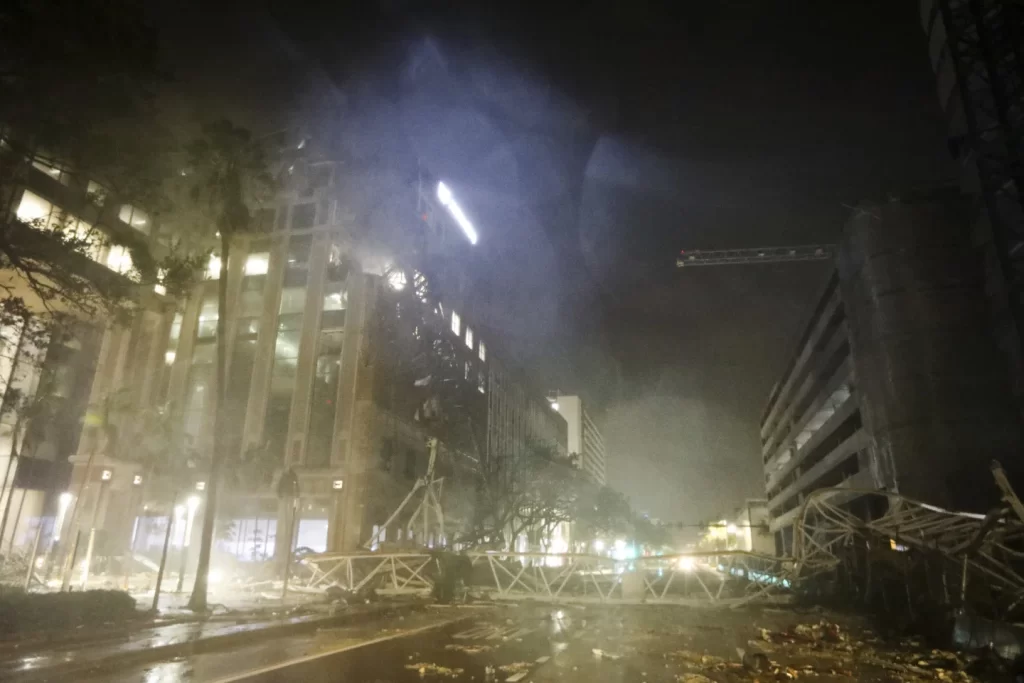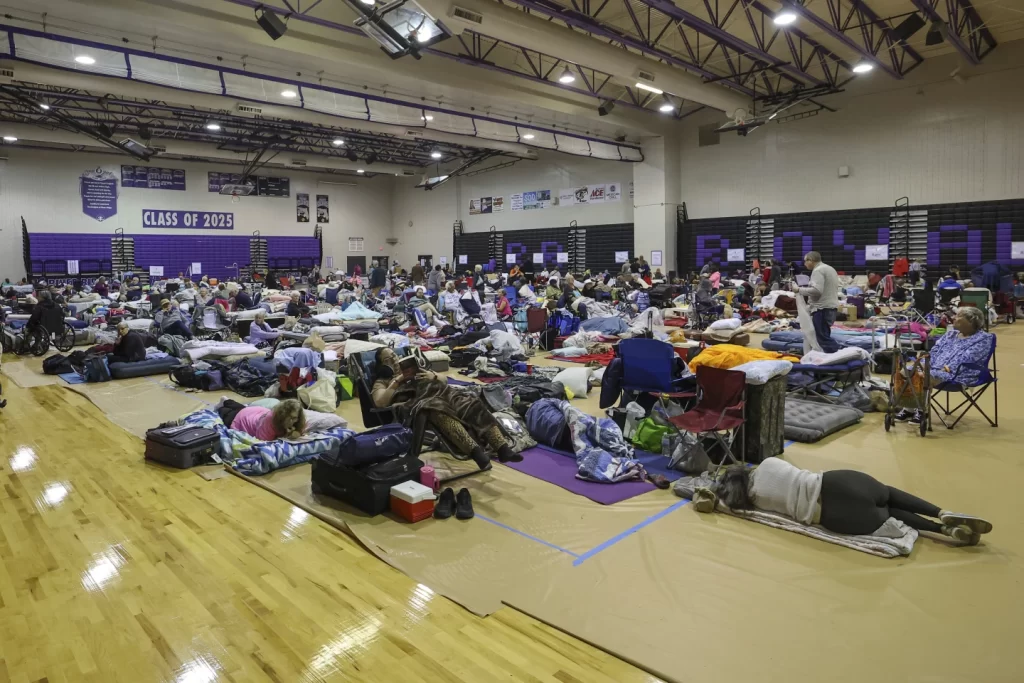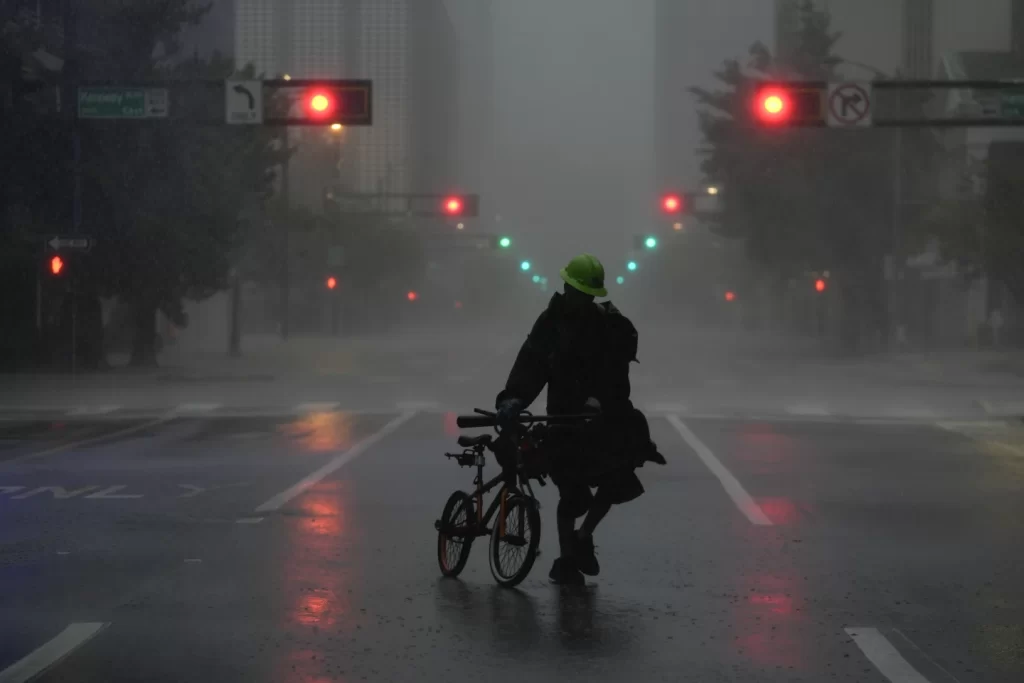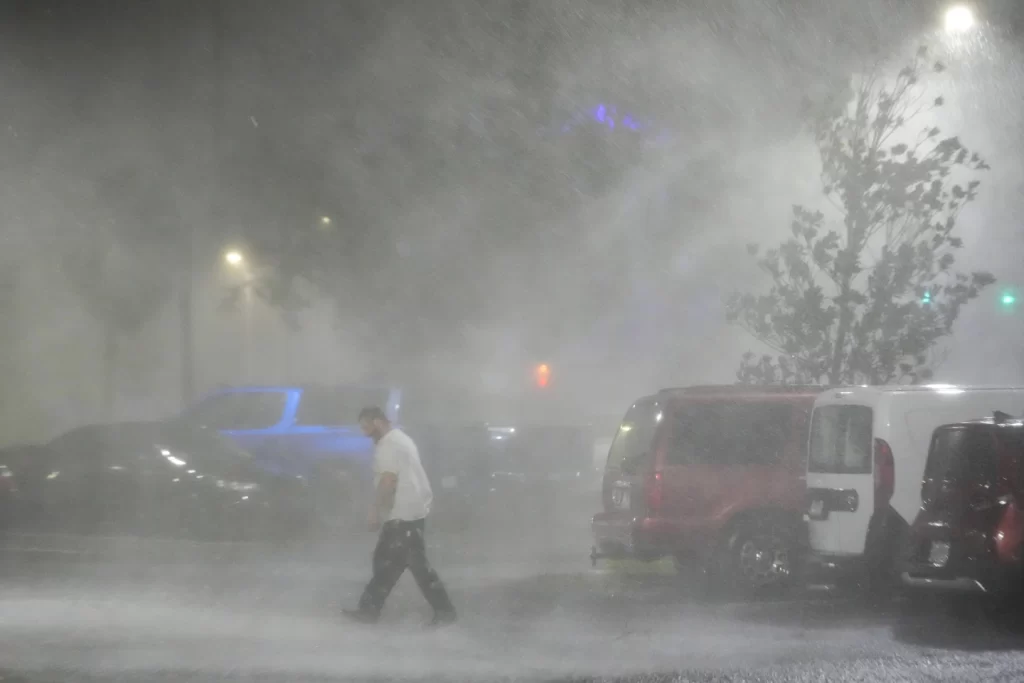Hurricane Milton battered Florida’s west coast as a powerful Category 3 storm on Wednesday night, leaving more than 3.2 million homes and businesses without power and causing widespread flooding and an unknown number of deaths. The storm, which made landfall in Siesta Key, about 70 miles south of Tampa, has now moved into the Atlantic Ocean, but officials warn that dangers persist across the state.

The National Weather Service reported that St. Petersburg received over 16 inches of rain, prompting flash flood warnings for western and central Florida. Storm surge remains a significant concern along much of the coastline, with tropical storm warnings still in effect for the east-central coast.
Authorities in heavily impacted counties, including Hillsborough, Pinellas, Sarasota, and Lee, urged residents to stay home due to hazards such as downed power lines, fallen trees, blocked bridges, and extensive flooding. Hillsborough County Sheriff Chad Chronister emphasized the ongoing danger, stating, “We’ll let you know when it’s safe to come out.”

The storm’s powerful winds caused significant damage to infrastructure, including ripping apart the roof fabric of Tropicana Field, home of the Tampa Bay Rays, in St. Petersburg. Multiple construction cranes were also toppled by the fierce gusts.
In St. Petersburg, residents lost access to tap water due to a major water main break, compounding the challenges faced by those without electricity. Mayor Ken Welch had previously warned of prolonged power outages and potential sewer system shutdowns.
Plant City, just inland from Tampa, experienced “absolutely staggering” flooding, according to City Manager Bill McDaniel. Emergency crews rescued 35 people overnight, with McDaniel estimating the city received 13.5 inches of rain.

Before making landfall, Milton spawned multiple tornadoes across southern Florida. The Spanish Lakes Country Club near Fort Pierce was particularly hard-hit, with homes destroyed and fatalities reported, though exact numbers were not immediately available.
Hurricane Milton’s impact is compounded by the devastation wrought by Hurricane Helene just two weeks prior, which left at least 230 people dead across the South. Many coastal areas were still clearing debris from Helene when Milton struck.

Governor Ron DeSantis outlined the state’s response efforts, including the deployment of 9,000 National Guard members and over 50,000 utility workers. However, he grimly acknowledged, “Unfortunately, there will be fatalities. I don’t think there’s any way around that.”
As the storm moves away from Florida, officials continue to assess the damage and work to restore essential services. The full extent of Hurricane Milton’s impact is expected to become clearer in the coming days as emergency responders gain access to the hardest-hit areas.



